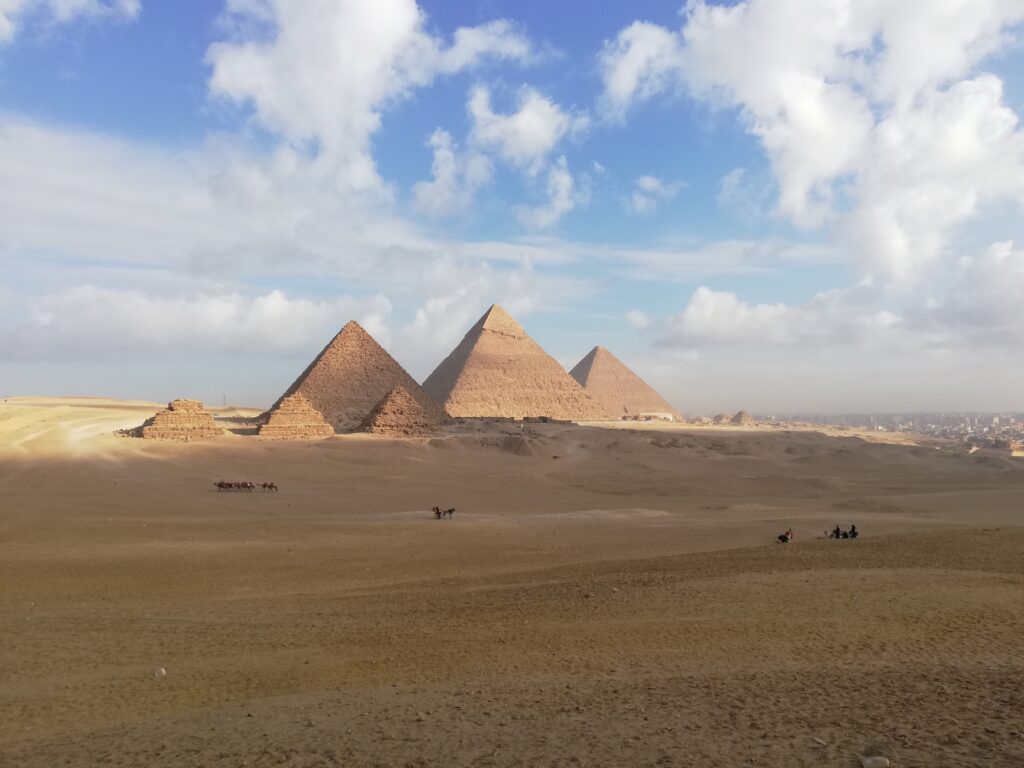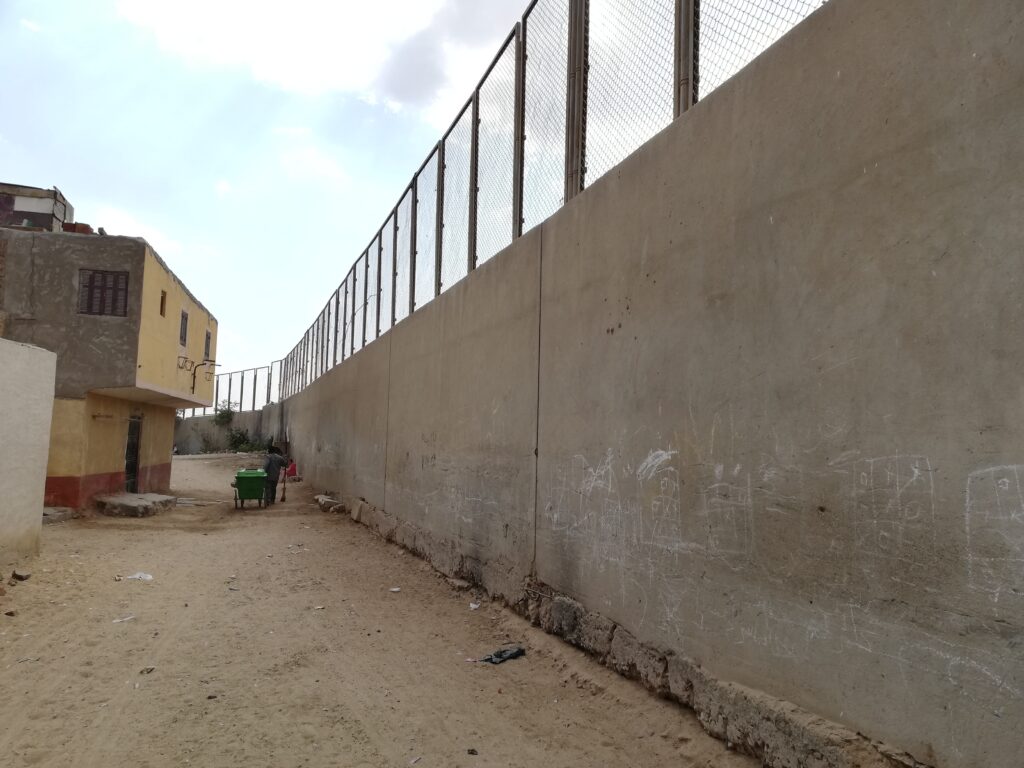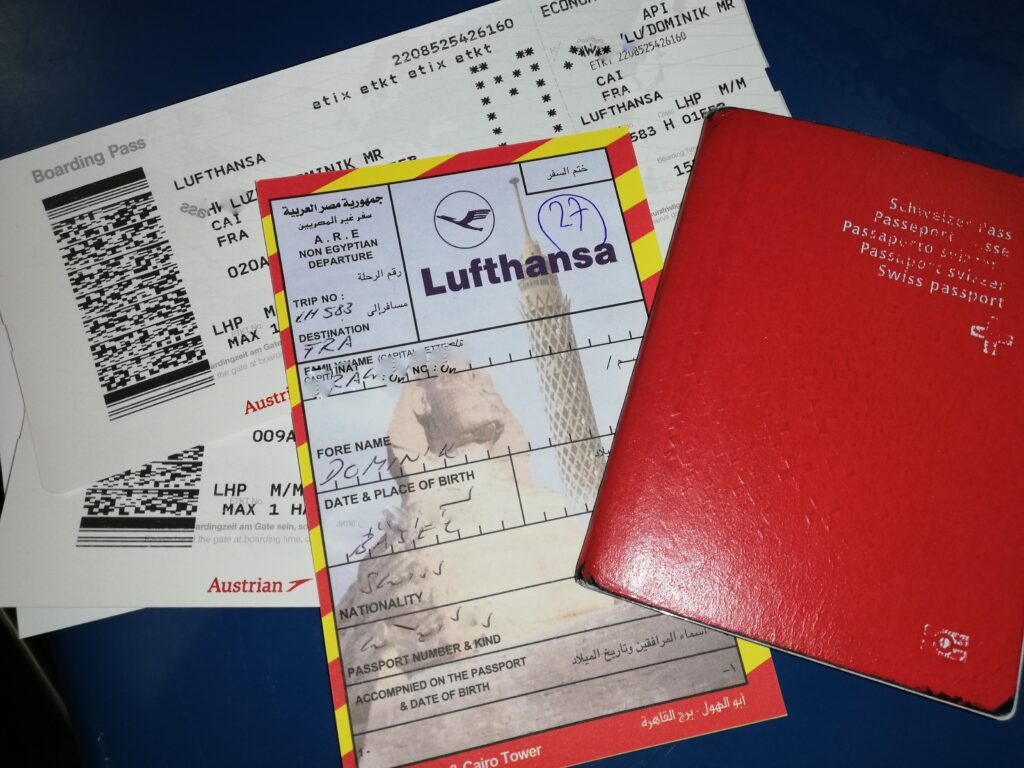Transaction losses through the eyes of a process specialist

Inefficient systems are characterised by waste of time, money, material, talent or movement. Transaction losses are encountered when between a buyer and a seller of services or goods an issue arises or money is lost. On my recent trip to Egypt I had plenty of such experiences but also some glimpses of a new way of doing things. It was a confirmation of the need to fix inefficiency issues by streamlining processes and automating solutions.
It all started with a bad decision of which bus to take to the airport. The bus got into heavy traffic in the center of Luxembourg and I was already late for my flight. That’s when it opened all doors without any announcement, signalling… I don’t know what. To me it looked like “we are stuck and passengers need to continue to next stop on foot where things will be better”. That’s what I did, only to realize there were no taxis available and the airport bus was my best chance. When I got to the airport, the flight was still boarding on the display. A good sign, as the Luxembourg airport is small and efficient. At the gate, I was then confronted with bad news: the pilot had decided against allowing late passengers on board. I saw the small airplane’s open door in 20 m distance, with a man in a yellow vest talking to the cabin crew but there was nothing I could do to get on that flight. It would cover another post to describe the things that went through my head in that very moment.
What followed was a nightmare of going to counters, calling Lufthansa and figuring out how to get to Cairo on the same day. It didn’t help that Lufthansa wanted to penalize me for having missed the first flight by cancelling the other three flights and by not allowing me to board the flight from Munich to Cairo. I was told that I would have to pay EUR 2000 to re-validate the flight from Munich. Revalidating the return flight cost yet another 17 EUR. I ended up having to pay a new one-way flight to Cairo.
There were several contributing factors to this mess:
- I had changed my original plan which bus to take to airport
- public transport in Luxembourg has a poor customer service
- it does not take much to bring traffic in Luxembourg Center to a standstill
- rigid and enforced rules at the gate, in spite of availability of a (visually) free passage
- airline policy not just to charge for distance, but also to penalize non-consumption of part of a trip.
The resulting consequences were stress, EUR 1000 more costs and 1.5 hours longer travelling time.
Wanting to be smart, I got a local SIM card at Cairo airport and left the arrival building to hitch a taxi or an Uber ride from the departure building. Only I didn’t find a pedestrian path to the building and was not able to enter my exact position in the Uber app. So I took a taxi for 25 EUR, knowing it shouldn’t cost more than 200 Egyptian pounds. I found out during the ride that 25 EUR are equivalent to 430 EGP. The contributing factors were
- I did not prepare myself enough to be able to calculate FX
- a lobby of taxi drivers are enforcing their monopoly at the airport, even against Uber
- the Egyptian government has not connected the airport to the city with easy-to-understand public transport
- outside the airport was not built for pedestrians.
The resulting consequences were 13 EUR too much cost.
As the Egyptian pound had depreciated, and many goods are imported, international hotels calculate in USD, which is then converted to and charged in EGP. As my base currency is EUR, the EGP amount will again be converted to EUR, leading to an additional FX transaction with intransparent rates and a loss of around 10% on the total amount.
Visiting the pyramids was a highlight. I had decided against a guide, fully realising that I knew very little about the history of that place. After the bustle in the city I hoped to enjoy the calm surroundings early in the morning. It almost worked. I did not count how many times I had to say no to guides, guards, vendors, camel herders or horse riders. In the end I saw a lot of impressive stuff and missed out a lot too, judging from pictures of other guests at the Pyramid guesthouse. Contributing factor to my transaction losses were
- the absence of paper or audio guides
- missing signs (not even the ticket window bears a sign)
- no clear price list of services at the pyramids.
Instead of being forced to haggle or be ripped off I decided not to play that game at all and faced the consequence of not seeing some beautiful artifacts and missing out on knowledge transfer.
On the way back I decided to hire a car from the local app “Careem”, which was recently purchased by Uber but remained a separate app. A driver accepted my booking and never really got closer. After 10 minutes another driver was somehow selected and eratically drove around (as a symbol on the map), also not getting closer. This game went on for half an hour. Cancelling would have cost me 15 EGP. So I used the Uber app to hail a car, where everything went smoothly. The contributing factors were
- my unwillingness to pay an inflated amount for a professional driver
- impossibility to give feedback to Careem driver before start of a trip in app
- possible lack of enforcement of good driver behavior.
As a consequence I lost about 45 minutes.
Not really in a hurry or mood to visit a museum I was at the airport way too early. I just wanted to have a coffee in a non-hassling environment and find a little something to bring home with me. Little did I know that a non-Egyptian departure form was needed. The guy at the passport control told me so in a rude tone. Turns out that every airline has their own card. Which is only available at the check-in counter. Which I didn’t plan on visiting as I had completed it online. A card which was only available when the counter was manned which happened only after an hour. And flying with Lufthansa, I could not just fill out the form from the EgyptAir
counter but had to use theirs. After passport control another person checked if the visa had been stamped correctly by the border guard, causing a bottleneck. To sum up, the contributing factors of the airport transaction losses were
- I had to queue up for check-in unnecessarily
- two paper boarding cards were unnecessarily printed
- several people were turned back by the passport control after queueing up
- checking only a stamp when the border guard had performed the more essential task of scanning the passport seems incongruent.
As a consequence I did not lose time, but had to spend my time in a holding area without food or bverages and with other activities than planned. People performed unnecessary tasks to get data that could have been obtained through existing records. Additional (to my eyes unnecessary) jobs were maintained.
On most occasions, apps like Careem, Uber and Booking helped me to secure quality services at a fair price without language barriers getting in the way. There was never any additional “fee” involved and the transaction was performed in full transparency. It was also good to see how the Egyptian government had erected a wall around the heritage site, had destroyed homes inside that perimeter and were enforcing building permits by destoying any floors that had been built exceeding the limit. While potentially devastating for people who had built without permission, it is an important show of law and order in a country with a history of Arab Spring and an growing population of over 100 million people.

The tall wall is an effective barrier to keep non-paying visitors away and avoid the settlement to grow further
If I could get involved with fixing some of these issues I would first get a solid understanding of the processes, model their performance, quantify issues by asking for more evidence, challenge the status quo of doing things, get input from customers and business what they want and look for media breaks and errors in the processes.


Recent Comments